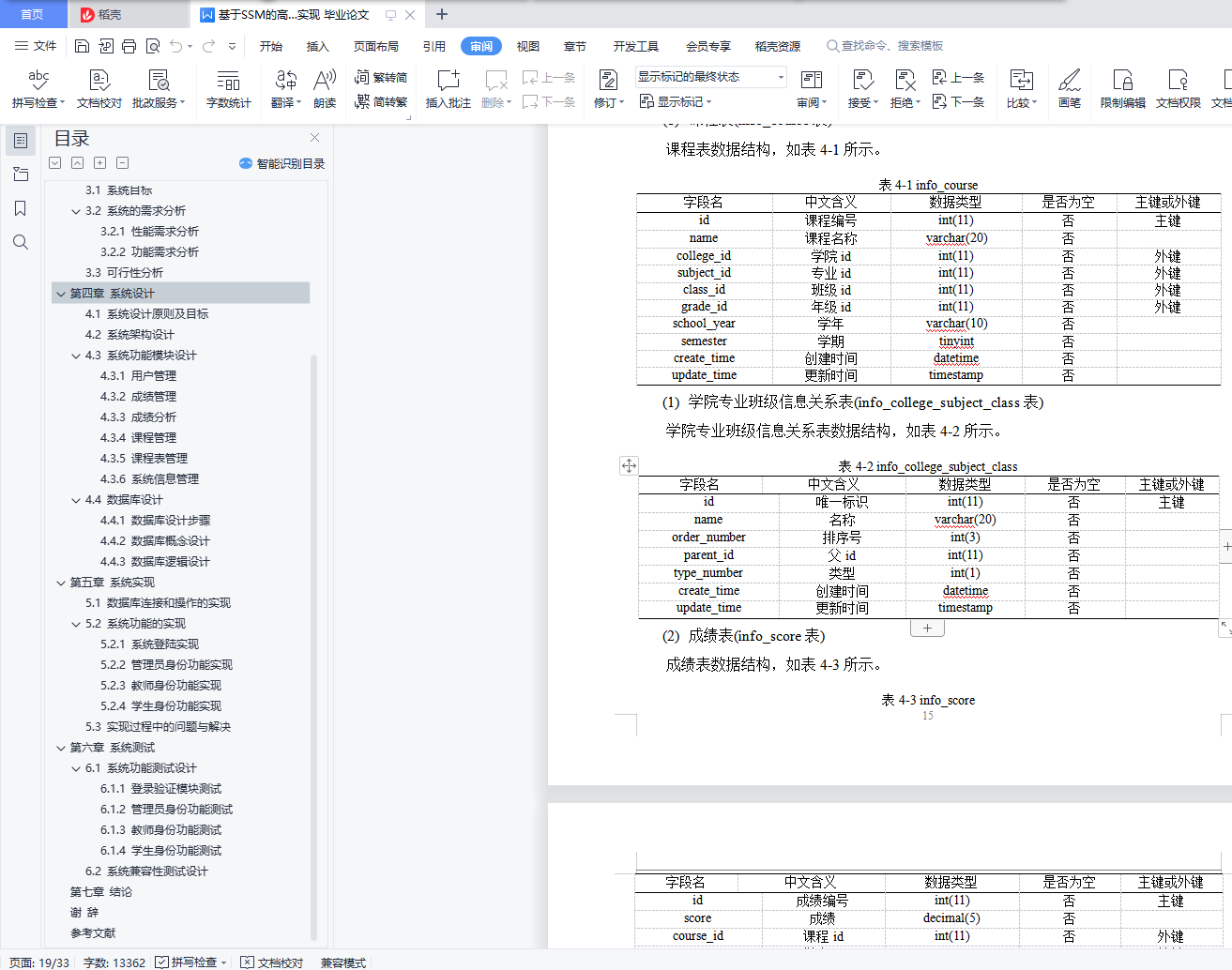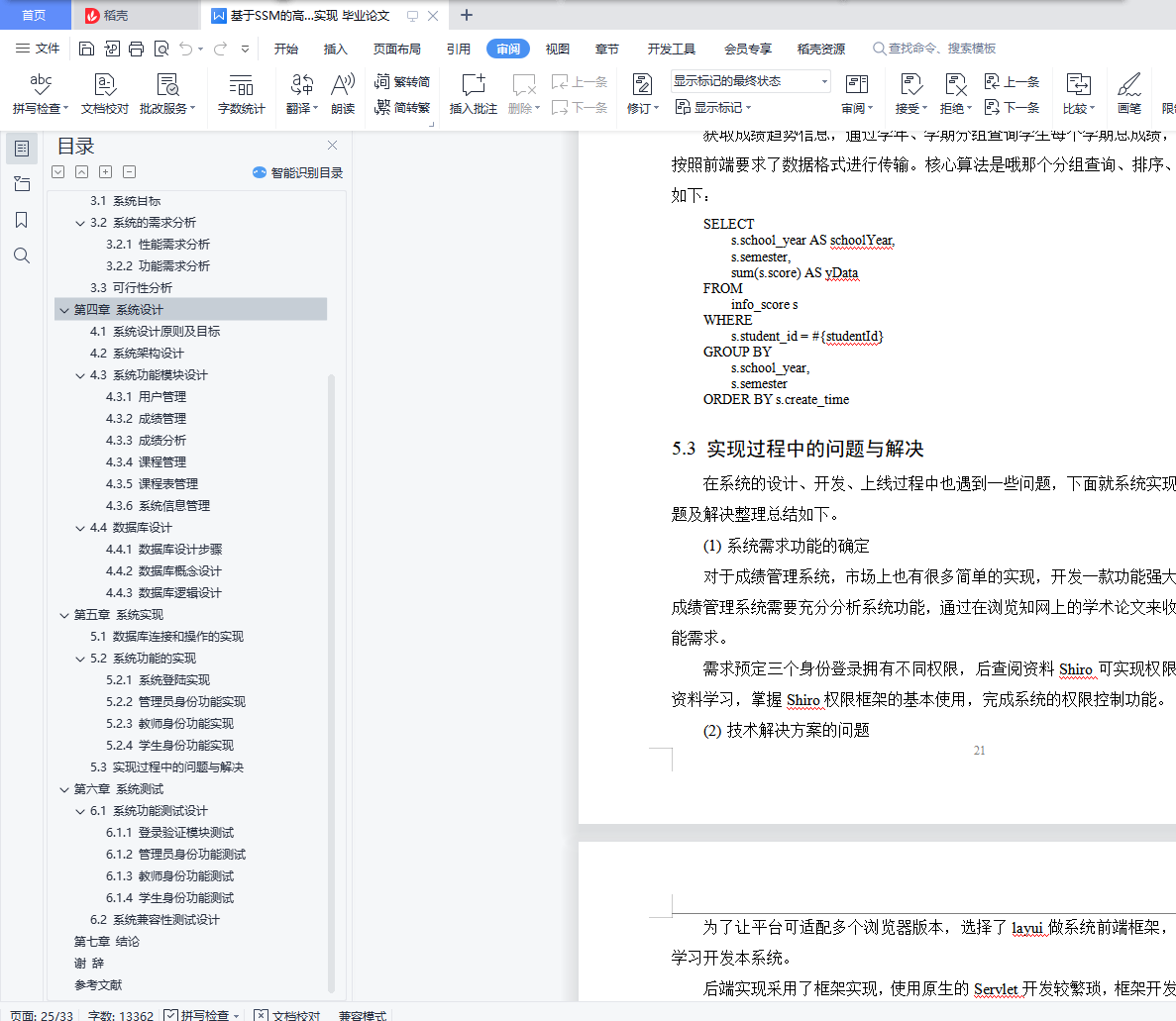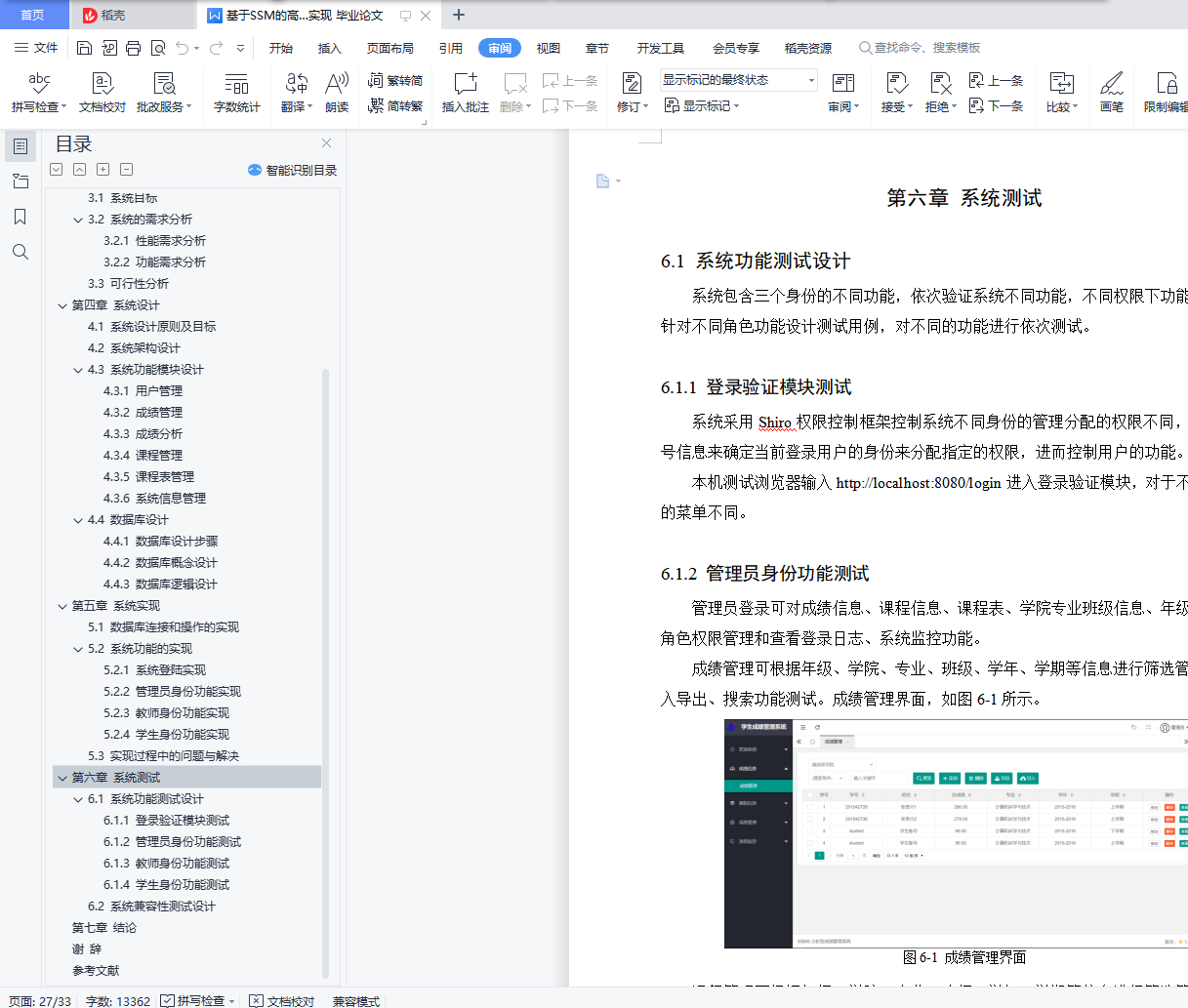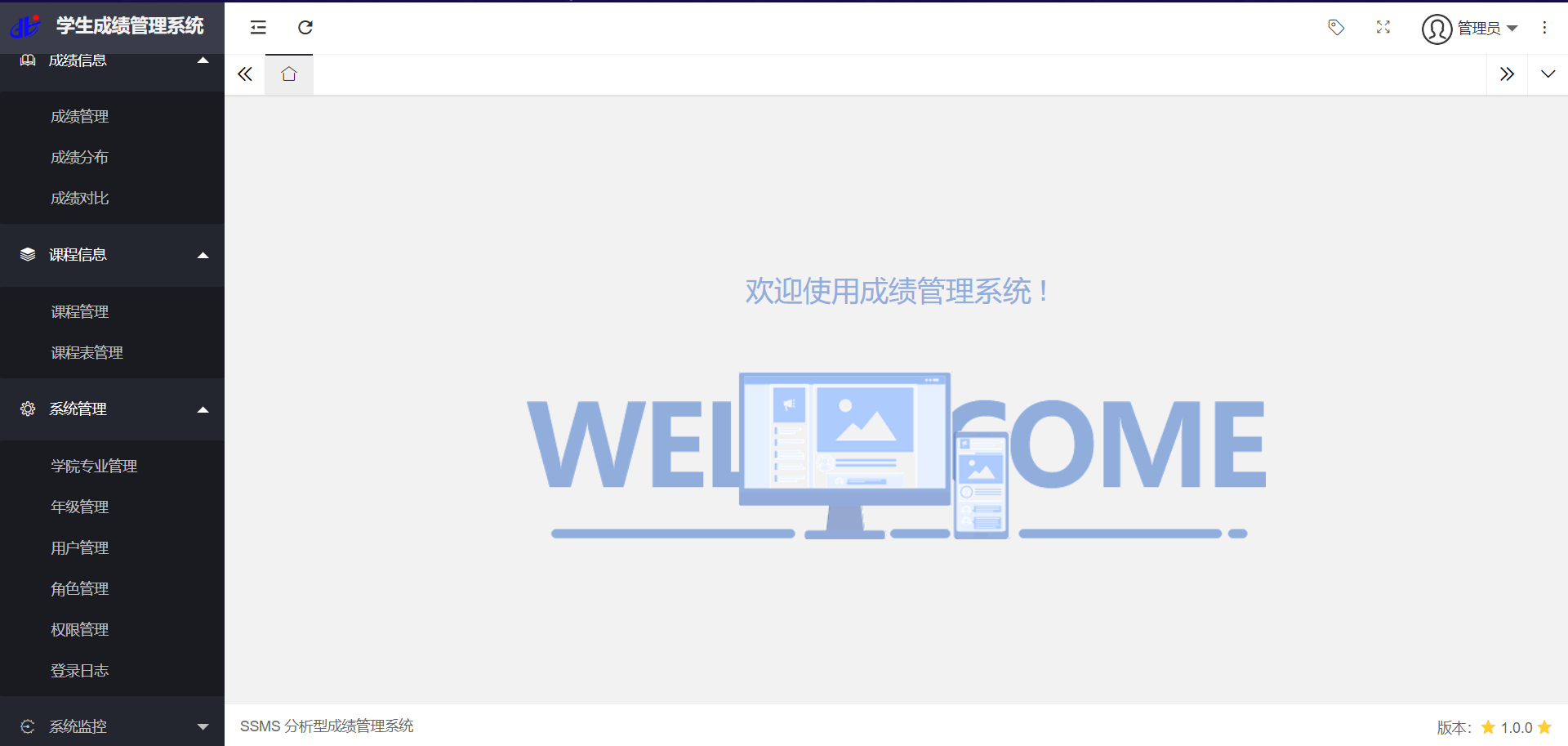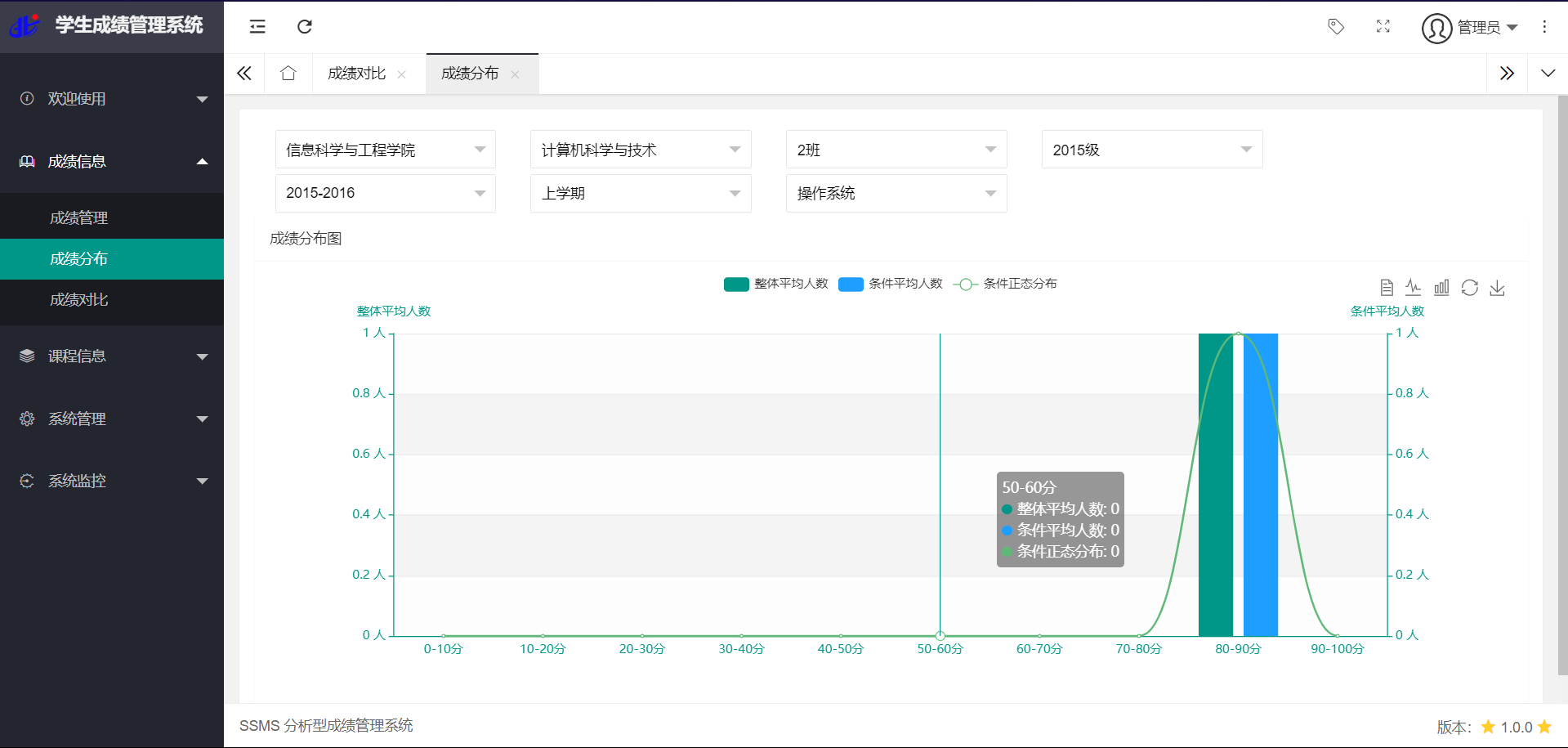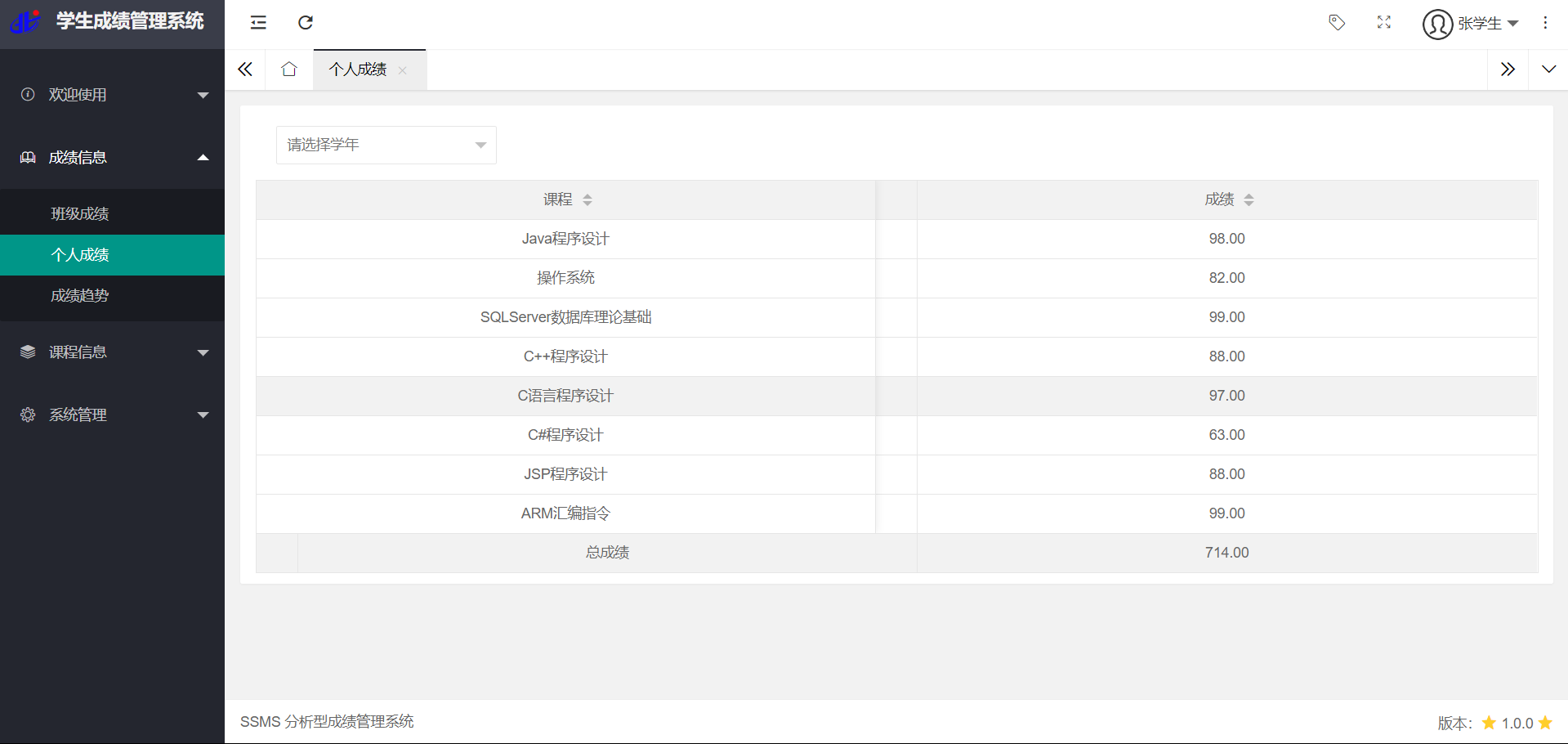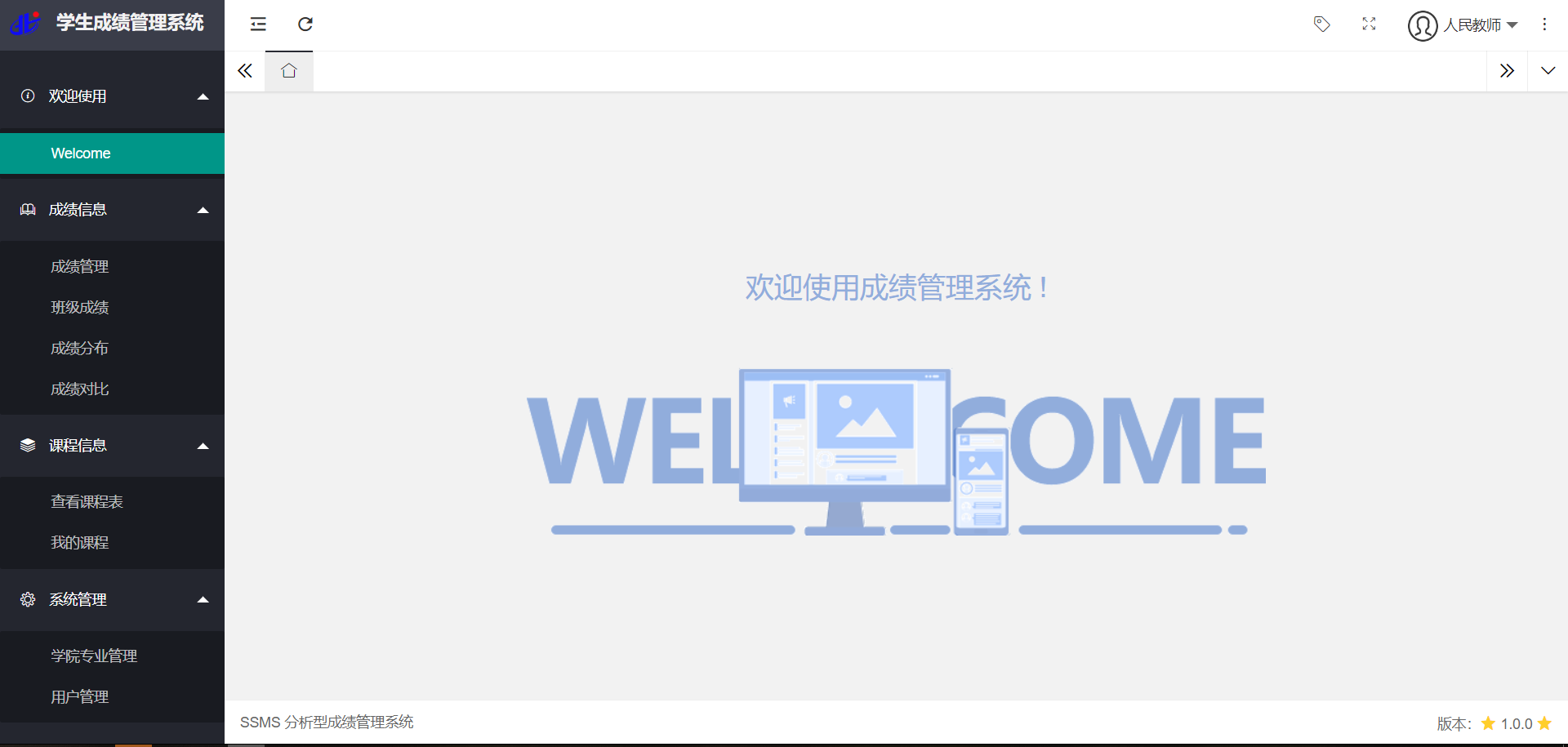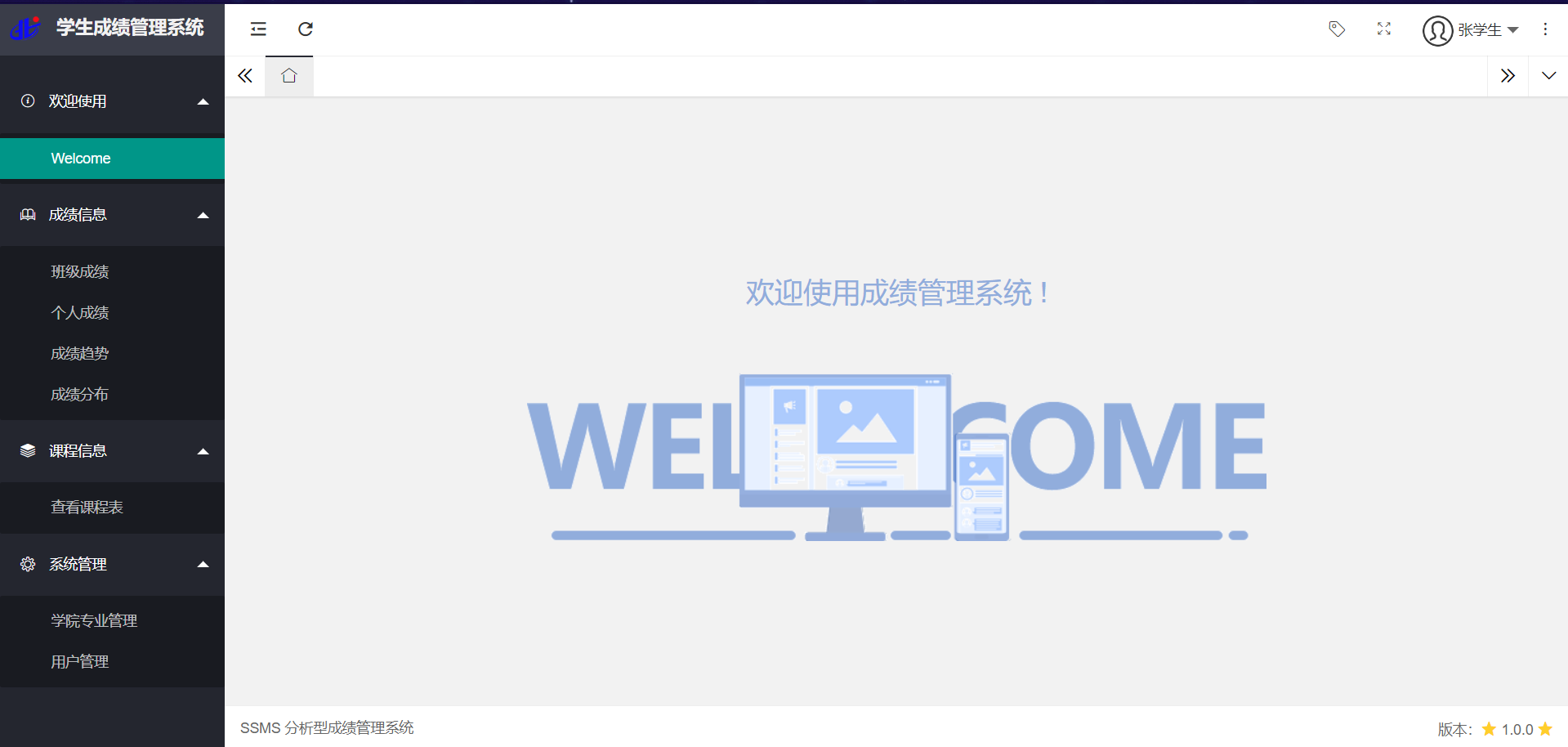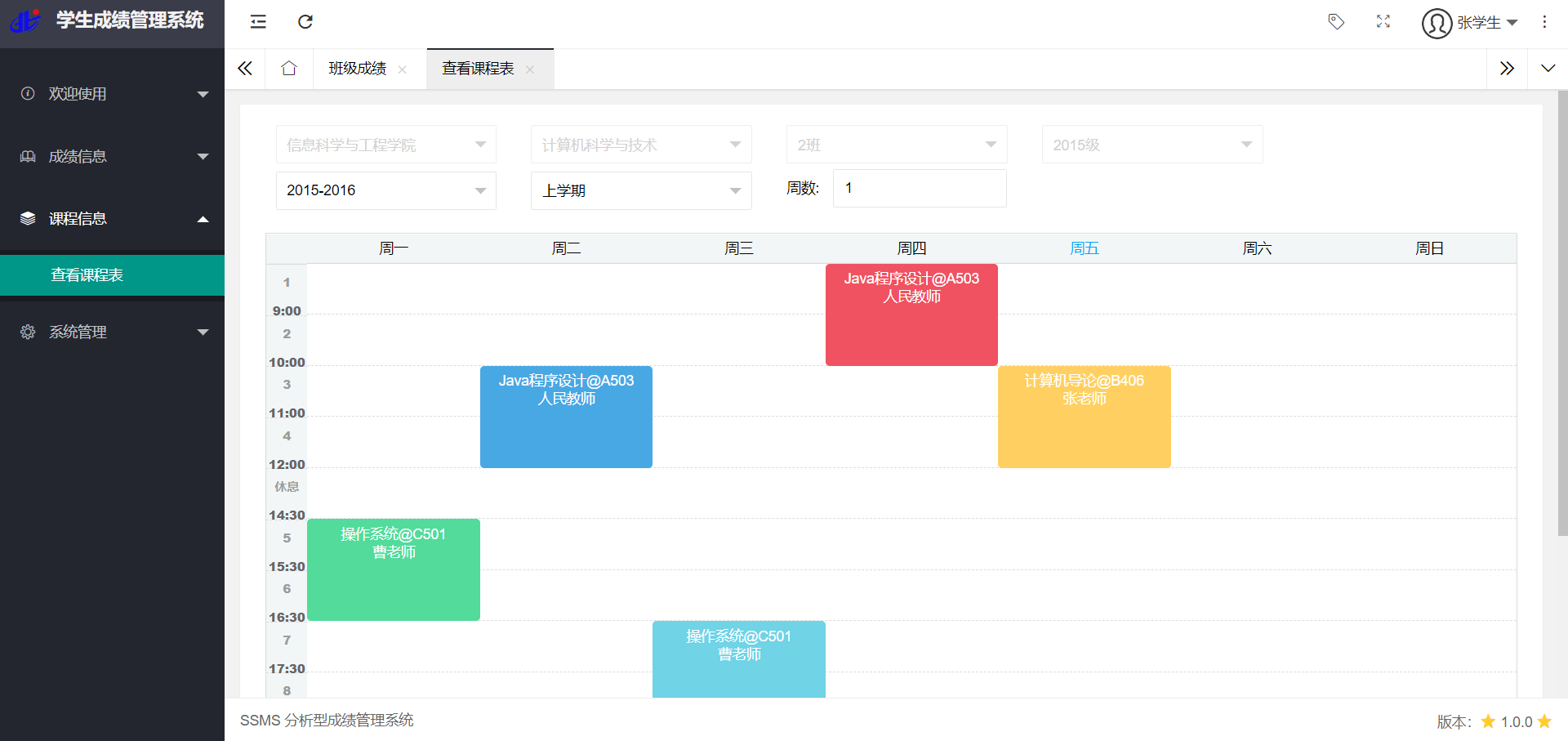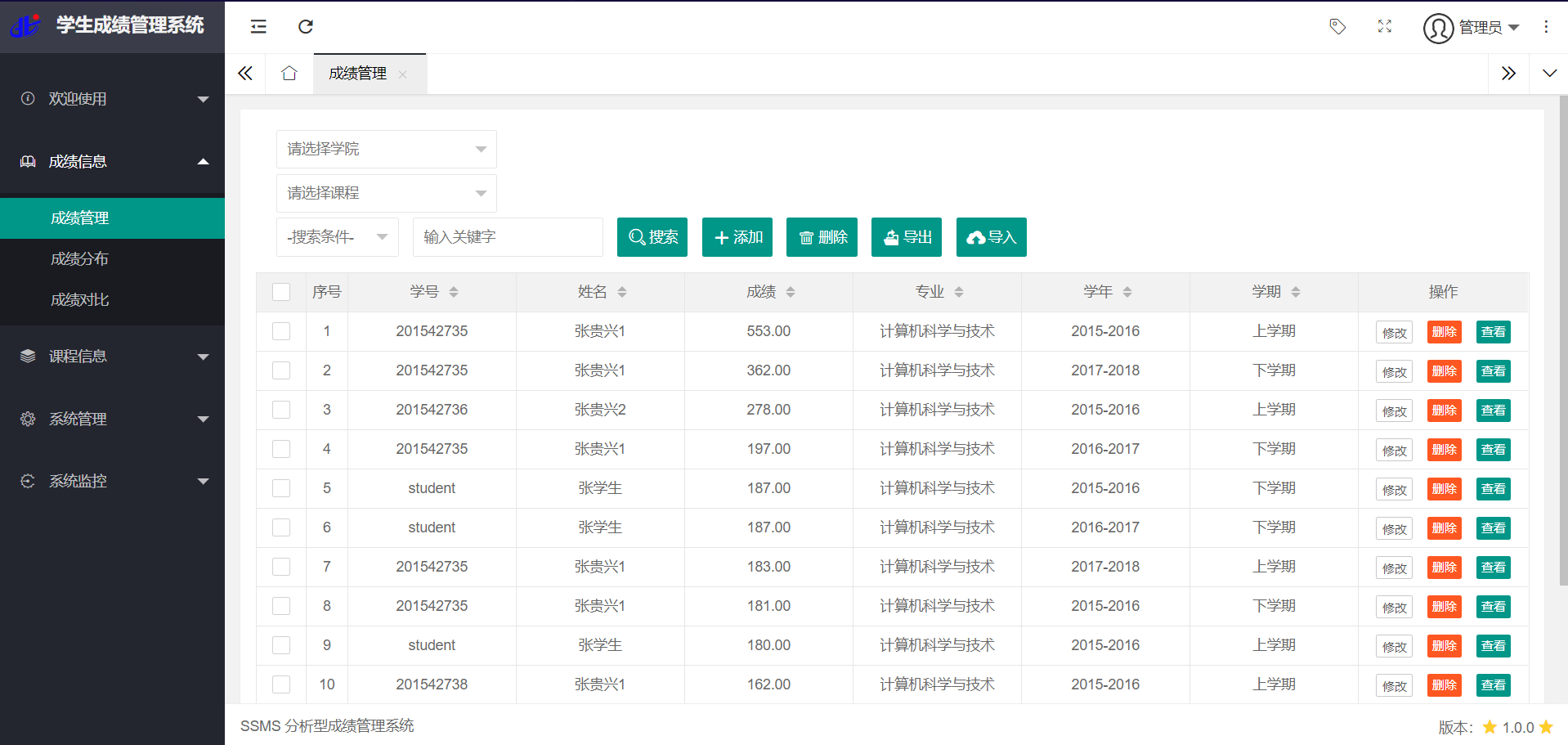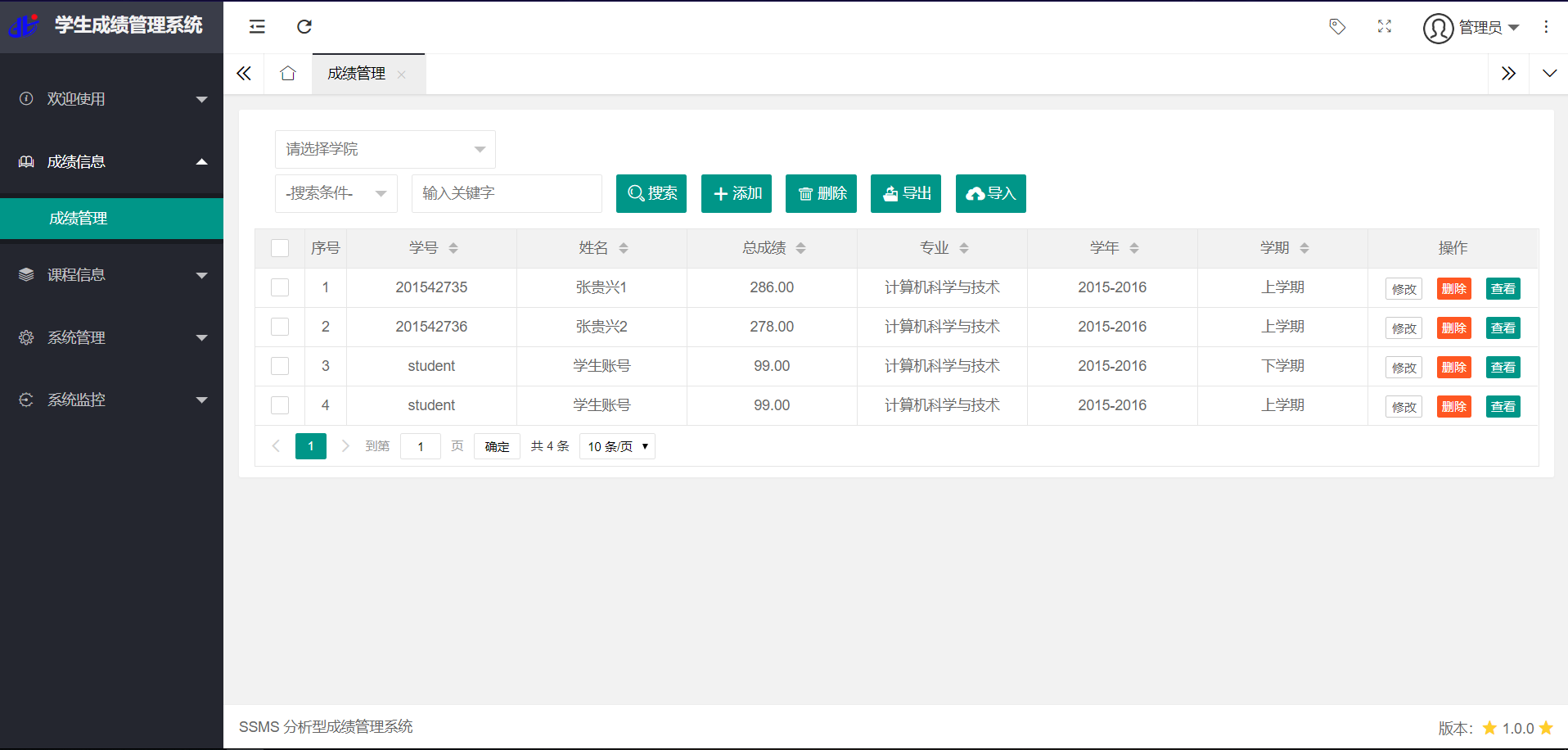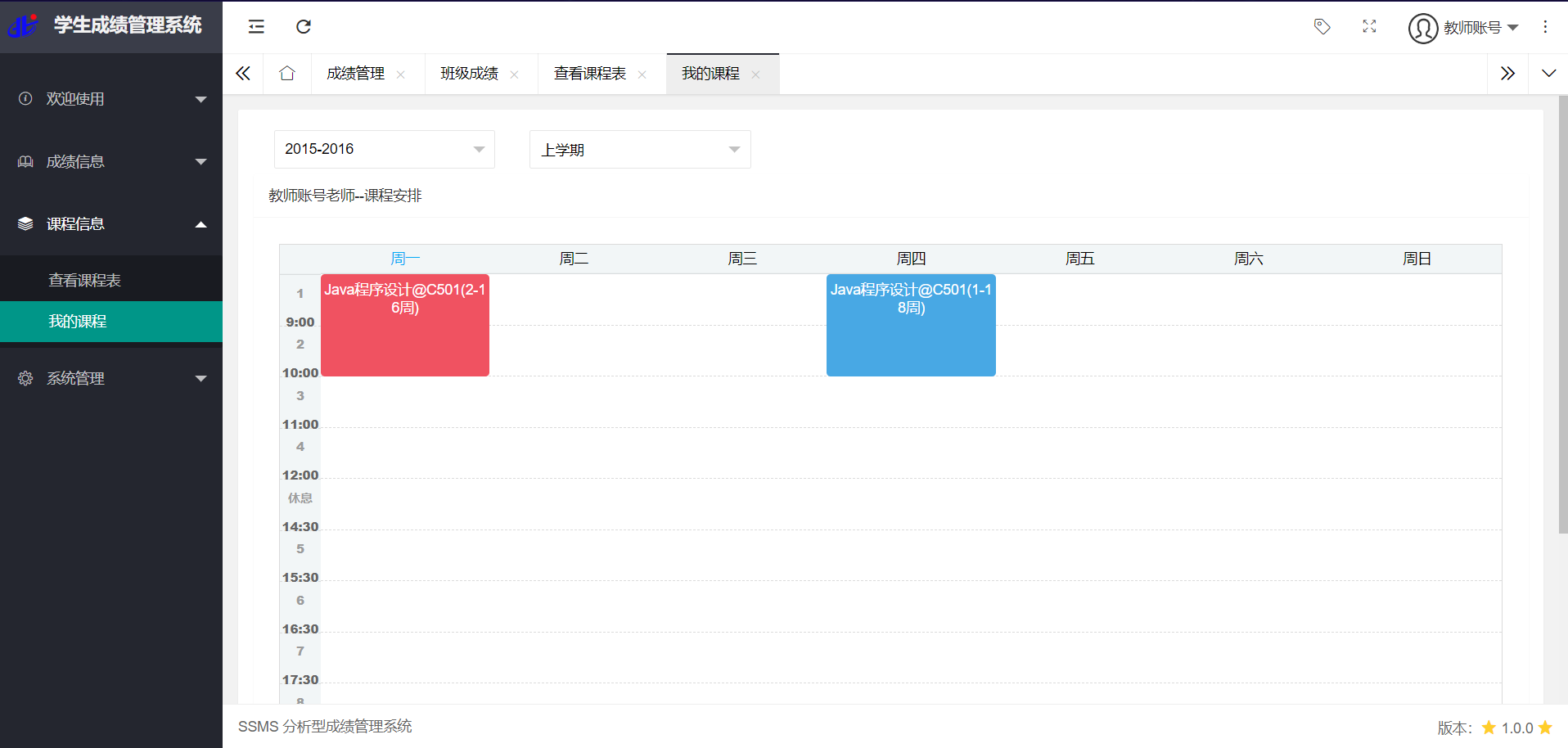摘 要
目前市面上的成绩管理系统虽然功能较为完善,但支持成绩分析功能的系统成绩管理系统并不多见。
研究了国内外发展现状,查阅了知网及相关学术网站,并通过调研分析整理出系统功能。设计了智能模块,分析学生班级成绩趋势,展示学生成绩正态分布情况;设计了成绩对比模块,可了解不同班级相同课程之间成绩差别情况、直观的查看学生个体成绩趋势;设定了课程管理和相关课程表的管理与查询等功能,帮助学生预习和教师备课,促使学生和教师更好的分配时间、了解课程计划。
系统采用B/S架构MVC模式开发,特别地,通过EasyExcel实现批量管理用户、课程、课程表和成绩信息功能,系统支持批量导入导出功能;使用百度开源工具Echarts实现系统图表的展示功能。
关键字 成绩管理 智能分析 课程管理 B/S
ABSTRACT
Although the performance management system currently on the market is relatively complete, the system of performance management systems that support the performance analysis function is rare.
Researched the development status at home and abroad, consulted the cnki and related academic websites, and compiled the system functions through investigation and analysis. The intelligent module was designed to analyze the student class performance trend and show the normal distribution of student performance. The performance comparison module was designed to understand the difference in performance between the same courses in different classes, to visually view the individual student performance trends, and to set up course management. And the management and query functions of related curriculums, help students prepare and prepare lessons for teachers, and encourage students and teachers to better allocate time and understand the curriculum plan.
The system adopts B/S architecture MVC mode development. In particular, it manages users, courses, curriculum and achievement information in batches through EasyExcel. The system supports batch import and export functions. It uses Baidu open source tool Echarts to realize system chart display.
Keywords Score management Intelligent analysis Course management B/S.
目 录
第一章 绪论 1
1.1 研究背景 1
1.2 国内外发展现状 1
1.3 主要研究内容 2
第二章 系统开发环境简介 3
2.1 开发环境及工具简介 3
2.2 Java语言简介 3
2.3 SpringBoot+SSM框架简介 3
2.4 MySQL数据库简介 4
第三章 系统分析 5
3.1 系统目标 5
3.2 系统的需求分析 5
3.2.1 性能需求分析 5
3.2.2 功能需求分析 6
3.3 可行性分析 7
第四章 系统设计 9
4.1 系统设计原则及目标 9
4.2 系统架构设计 9
4.3 系统功能模块设计 9
4.3.1 用户管理 12
4.3.2 成绩管理 12
4.3.3 成绩分析 12
4.3.4 课程管理 13
4.3.5 课程表管理 13
4.3.6 系统信息管理 13
4.4 数据库设计 13
4.4.1 数据库设计步骤 13
4.4.2 数据库概念设计 14
4.4.3 数据库逻辑设计 15
第五章 系统实现 17
5.1 数据库连接和操作的实现 17
5.2 系统功能的实现 17
5.2.1 系统登陆实现 17
5.2.2 管理员身份功能实现 18
5.2.3 教师身份功能实现 19
5.2.4 学生身份功能实现 20
5.3 实现过程中的问题与解决 21
第六章 系统测试 23
6.1 系统功能测试设计 23
6.1.1 登录验证模块测试 23
6.1.2 管理员身份功能测试 23
6.1.3 教师身份功能测试 24
6.1.4 学生身份功能测试 25
6.2 系统兼容性测试设计 26
第七章 结论 27
谢 辞 28
参考文献 29
